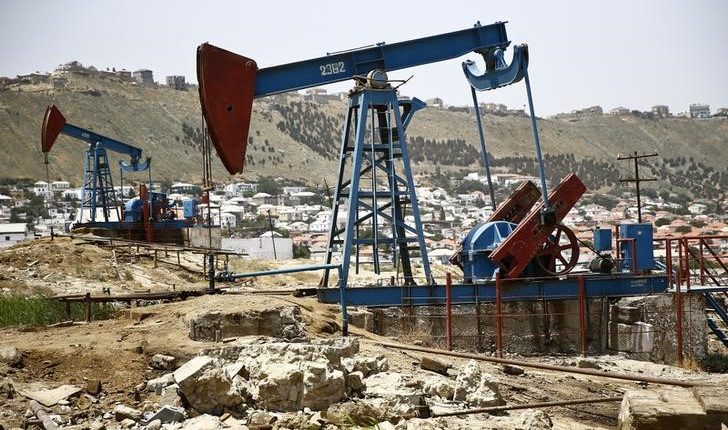© Reuters.
Investing.com — Crude prices drifted Monday as some traders bet on stimulus measures by top oil buyer China and storm activity in the North Atlantic to come to the market’s rescue. Others wagered on macroeconomic uncertainties to halt any sharp rally above $80 a barrel.
New York-traded West Texas Intermediate, or WTI, crude managed to stay above $80 but its gain on the day was modest, at 27 cents, or 0.3%, for the settlement at $80.10.
The benchmark finished last week down 1.8%, after shedding 2.3% the week prior. Before that, it rose for seven weeks in a row in a rally that lifted WTI by nearly 20%.
London-traded settled down 6 cents, or 0.1%, at $84.42 per barrel. Brent fell 0.4% last week, adding to the previous week’s 2.3% drop. Before that, the global crude benchmark also rose for seven weeks in a row, rising by a total of 18%.
Tropical Storm Idalia was, meanwhile, intensifying on its track towards Cuba and was likely to cause a day or two of power outages, IG market analyst Tony Sycamore said in comments carried by Reuters. That “should see some short-term support for the oil price”, he added.
Focus was also on “China actions to support its economy…and whether Brent can regain momentum on a break above $85”, said Ole Hansen, head of commodity strategy at Saxo Bank.
On the macroeconomic front, investors were looking out for Tuesday’s reading on U.S. , Wednesday’s estimate on second-quarter Gross Domestic Product and Friday’s report on — all for the month of August.
Of these, the jobs report is most concerning to traders as a stronger-than-expected number would mean stubborn inflation that could prompt the Federal Reserve to keep to its higher-for-longer interest rate regime.
July’s addition of 187,000 jobs was the smallest since March 2021. Wall Street’s economists are predicting a 170,000 expansion for August.
Inflation hit four-decade highs of more than 9% per annum in June 2022 due to trillions of dollars of federal relief spending following the 2020 coronavirus outbreak. The Fed responded with its most aggressive rate hikes in 20 years, going from a base rate of just 0.25% in March 2022 to 5.5%.
While pandemic-related spending is over and price growth has stabilized at 3% per annum now, a robust labor market has allowed Americans to continue spending, preventing the Fed from achieving its target for inflation.
Fed Chair Jay Powell made clear last week that U.S. rates will follow inflationary pressure. “We are prepared to raise rates further if appropriate, and intend to hold policy at a restrictive level until we are confident that inflation is moving sustainably down toward our objective,” Powell said.
(Ambar Warrick contributed to this item)
Read the full article here

